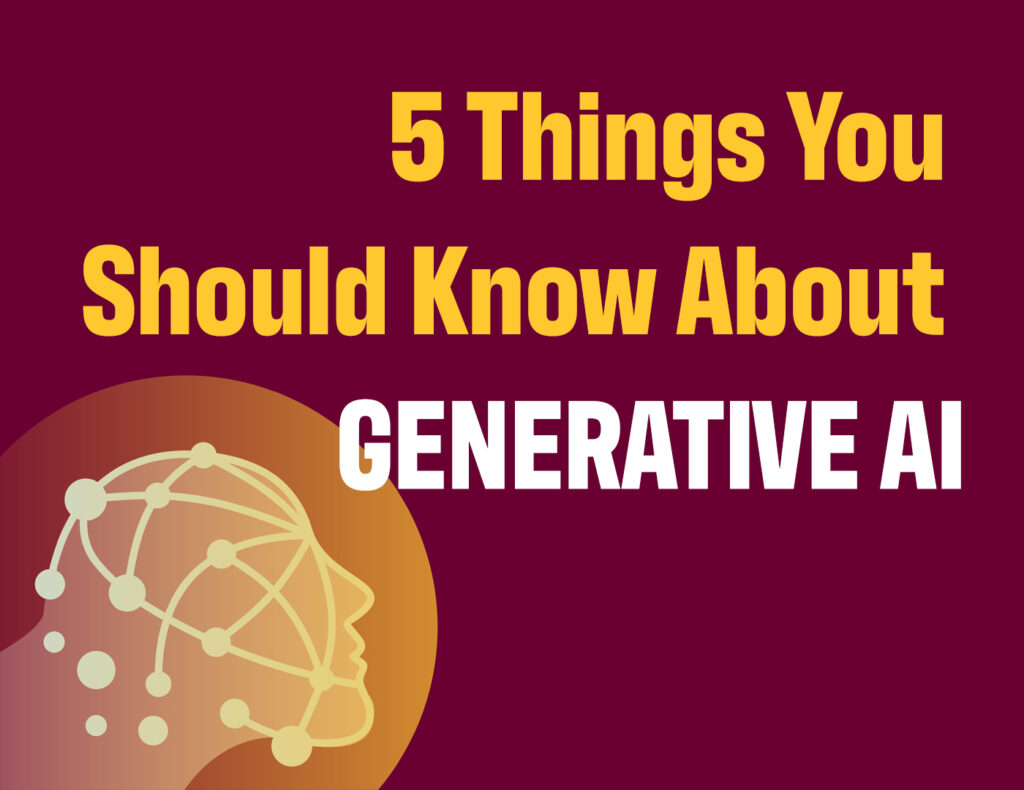A collaborative piece by The Office of Curriculum and Instructional Support (CIS) and Academic and Research Computing (OIT).
1. Chat GPT is less intelligent and more a group of toddlers with keyboards that have gotten really good at pretending to be grownups.
Chat GPT is a large language model that has been trained to choose the most likely next sequence of words in response to your prompt. It may use information you provide or information from the internet as additional context. But at its core, it is just making a statistically based guess rather than applying creativity or intelligence. All generative AI works on this predictive model, whether predicting the next word, pixel, or frame.
2. Generative AI is not a Swiss army knife or even a spork.
Generative AI is a tool, and very few tools can do many things well. There are many different versions of generative AI, with more coming out every day. Whether you use ChatGPT, Claude, or Hugging Face, the basic premise of operations for a large language model is the same, and the same is true for image generators. The tool you choose will depend on the output nuances you need. Some are faster but less precise, others are very precise but have a limited range of language, and everywhere in between. You will need to research and try multiple platforms to find the best fit for your needs. CMU does not currently endorse or support any specific platform but encourages you to connect with your IT department for suggestions and support.
3. Your partner may be able to read your mind…but AI needs you to use your words.
Generative AI generates outputs based on your prompt, so your prompt must provide the context and information needed to generate accurate outputs. For best results, give a specific audience, tone, length, and example of the output type you would like (i.e., outline, summary, blog post, email, etc.). Be sure to highlight specific areas of focus or exclusion. You can prompt the tool to ask additional questions if needed. Once you have reviewed the output, you can then ask for corrections and clarifications.
4. AI is like Instagram, without privacy filters.
You should always assume that anything put into generative AI will be made available to something or someone else in some way. Many generative AI platforms take advantage of user data to train their platform. Even within “protected” environments where information is not used for larger training sets, anything you input into the model is most likely being used to at least customize your experience. With this in mind, you should never share identifying information about yourself, students, or proprietary research with a generative AI tool.
5. AI is here to stay; we better learn to collaborate.
Generative AI is here to stay, offering new opportunities to enhance our capabilities rather than replace them. By embracing generative AI thoughtfully and ethically, we can improve efficiency and tackle complex problems in ways previously only imagined. The key lies in striking a balance – leveraging AI’s strengths while prioritizing critical thinking, creativity, and the irreplaceable human elements we bring to our work and lives.

